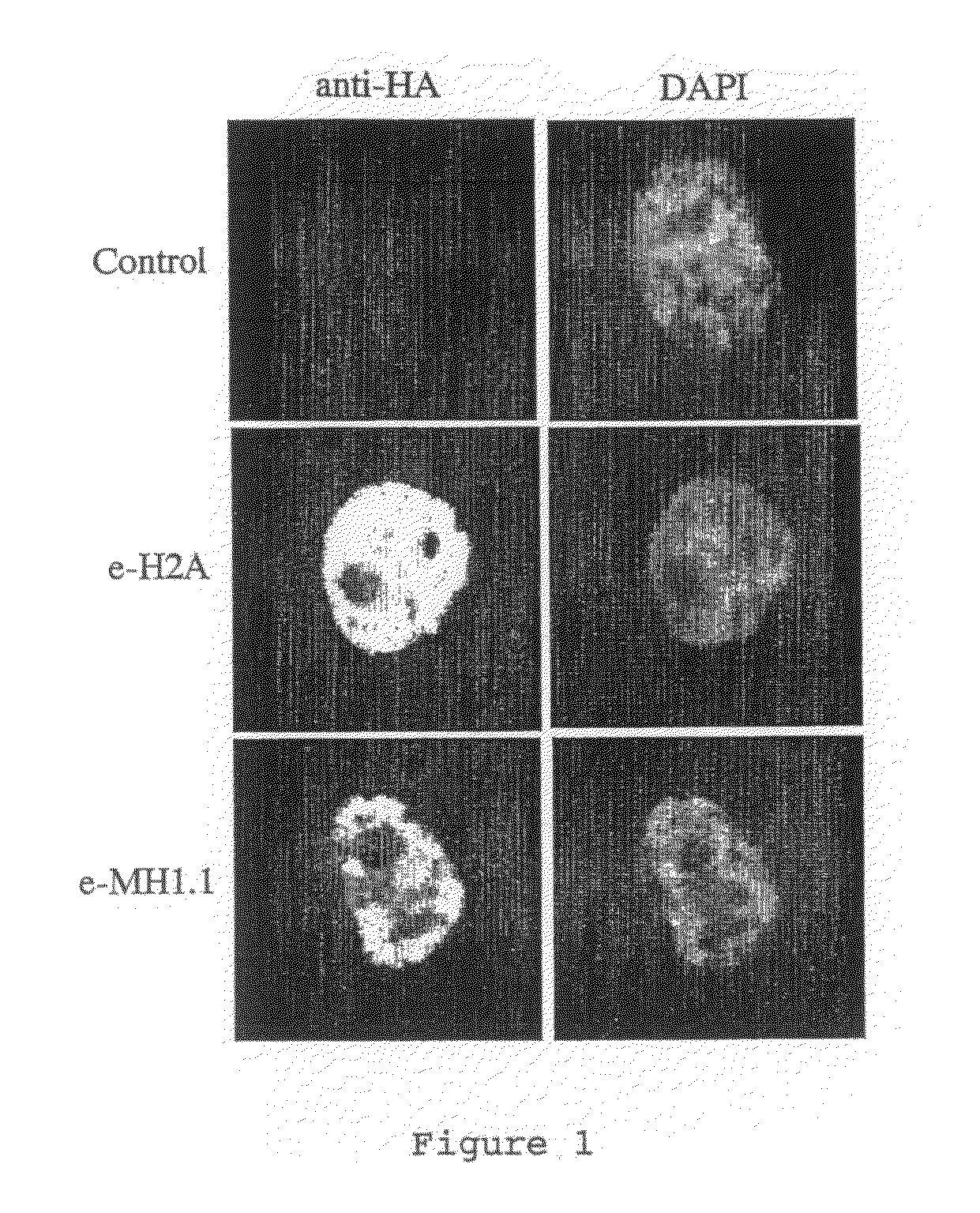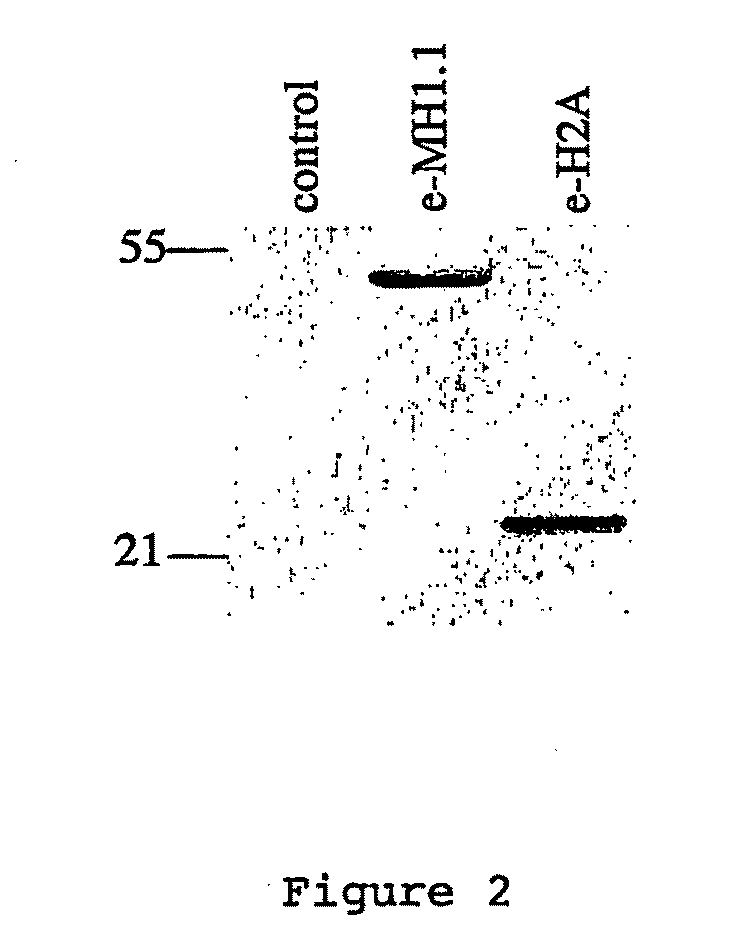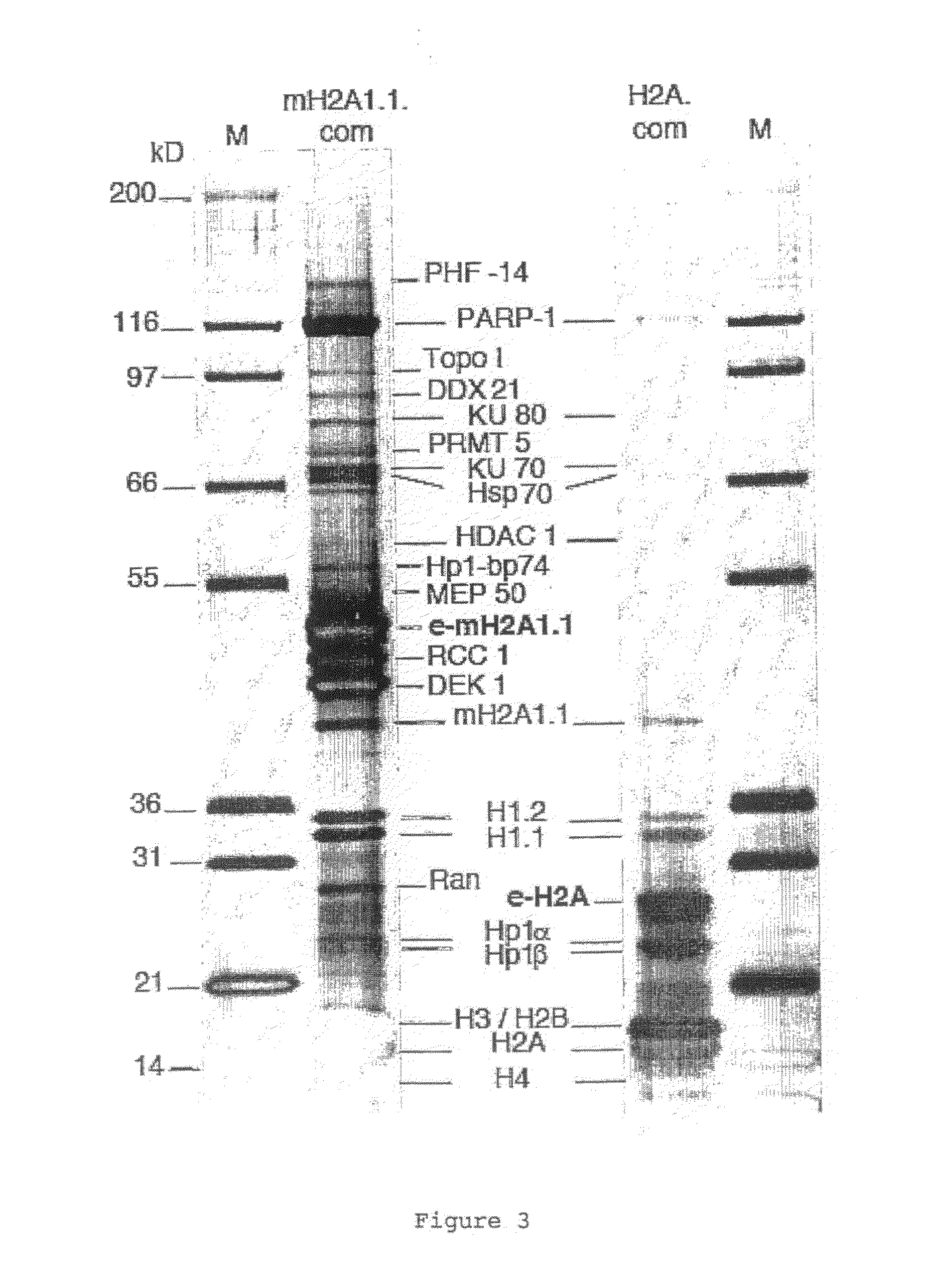Inhibitors of PARP Activity and Uses Thereof
a technology of parp activity and inhibitors, which is applied in the direction of depsipeptides, peptide/protein ingredients, and vector-based foreign material introduction, etc., can solve the problems of cell damage or death through depletion of energy stores, cell death results directly, and atp may also be depleted
- Summary
- Abstract
- Description
- Claims
- Application Information
AI Technical Summary
Benefits of technology
Problems solved by technology
Method used
Image
Examples
examples
1) Plasmid Construction
[0107]The cDNA clones corresponding to the complete coding sequence from H2A (NM—138609; nucleic acid 186 to 1295 of SEQ ID NO: 4), macroH2A1.1 (NM—004893; nucleic acid 174 to 1289 of SEQ ID NO: 5) and macroH2A1.2 (NM—018649; nucleic acid 214 to 1332 of SEQ ID NO: 6) histones were PCR-amplified from image clones purchased from INVITROGEN with primers incorporating restriction enzyme recognition sites. The amplified PCR fragments were then subcloned into the Xho I-Not I sites of pREV-HTF retroviral vector or pGEX-5X.1 vector (AMERSHAM) according to the manufacturer's instruction. Constructs were sequenced to ensure sequence integrity.
2) Expression and Localization of MacroH2A1.1
[0108]MacroH2A1.1 and H2A histones were each stably expressed as fusion proteins with N-terminal double HA and double Flag epitope tags (e-MH1.1, and e-H2A) in HeLa cells by retroviral transduction according to standard protocols Immunofluorescence experiments were performed on stably tr...
PUM
| Property | Measurement | Unit |
|---|---|---|
| Length | aaaaa | aaaaa |
Abstract
Description
Claims
Application Information
 Login to View More
Login to View More - R&D
- Intellectual Property
- Life Sciences
- Materials
- Tech Scout
- Unparalleled Data Quality
- Higher Quality Content
- 60% Fewer Hallucinations
Browse by: Latest US Patents, China's latest patents, Technical Efficacy Thesaurus, Application Domain, Technology Topic, Popular Technical Reports.
© 2025 PatSnap. All rights reserved.Legal|Privacy policy|Modern Slavery Act Transparency Statement|Sitemap|About US| Contact US: help@patsnap.com



